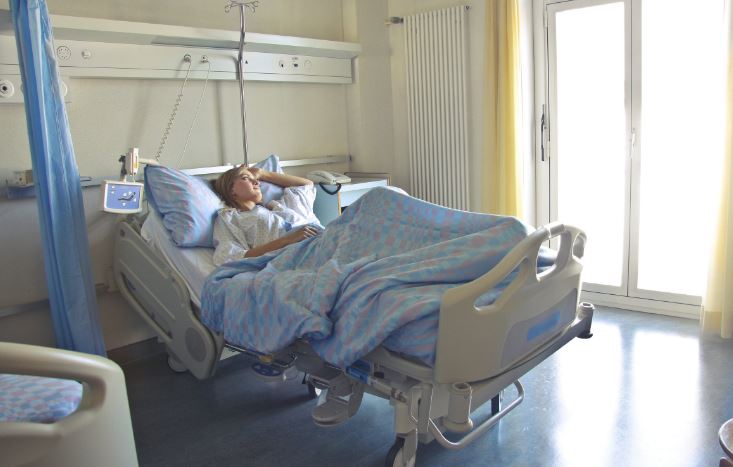|
Press Release
FOR IMMEDIATE RELEASE: July 1, 2020
MDHHS CONTACT: Lynn Sutfin, 517-241-2112, [email protected]
MDARD CONTACT: Jessy Sielski, 517-331-1151, [email protected]
EGLE CONTACT: Nick Assendelft, 517-388-3135, [email protected]
Stay safe this summer by looking out for harmful algal blooms
LANSING, Mich. – If you or your family will be living near or visiting Michigan waters this summer, it is important to be aware of potential harmful algal blooms (HABs) caused by cyanobacteria, which can have an impact on the health of people and animals. Also called blue-green algae, cyanobacteria are a natural part of Michigan lakes, rivers and ponds. However, some cyanobacteria produce toxins, called cyanotoxins, that can make people and animals sick if they grow to form HABs.
HABs in Michigan usually happen from May through October, with most appearing in August and September. A bloom can last days or months. Blooms can change in size, severity and location within the same day. They also may disappear on a waterbody, but then form again.
Breathing in or swallowing water containing HABs and their toxins may cause the following symptoms: runny eyes or nose, asthma-like symptoms, stomach pain, vomiting, diarrhea, weakness, numbness, headaches, dizziness or difficulty breathing. Skin contact can cause rashes, blisters and hives.
“As it’s not possible to know if an algal bloom is harmful just by looking at it, we urge Michiganders to avoid discolored areas in the water or water that looks like it has algae growing on it,” said Dr. Joneigh Khaldun, chief medical executive and chief deputy for health for MDHHS. “If you may have had contact with or swallowed water with a HAB and feel sick, call your doctor or Poison Control at 800-222-1222. If symptoms are severe, get emergency medical attention as soon as possible.”
What does a HAB look like?
HABs can be many colors, such as green, blue-green, blue, brown, white, purple or red. HABs can look like scum in the water and may have flecks, foams, globs or mats floating in it. The water can look like it has spilled paint or a green sheen on the surface. Some HABs smell bad.
Are there nontoxic blooms on lakes?
Yes, green ‘filamentous’ algae, aquatic vegetation, duckweed and pollen are sometimes mistaken for cyanobacterial blooms but do not contain toxins. Visit the Harmful Algal Bloom Picture Guide at Michigan.gov/habs for examples of HABs and other lake conditions mistaken for HABs.
What should I do if I think I’ve found a HAB?
Consult the Harmful Algal Bloom Picture Guide for examples of HABs and compare to other algae and plants found in lakes. If you think you have found an HAB or have any suspicion, do not let people, livestock or pets in the water or near the shore where you see the potential HAB. Unless the bloom covers a large part of the lake, you can limit your risk by using a part of the lake with no visible accumulation of algae. Always rinse off people and pets after contact with any lake water.
Follow instructions on posted HAB advisories or closings. Advisories or closings at some beaches for bacteria, such as E. coli, can also be issued and should be followed. Beach monitoring information is available at Egle.state.mi.us/beach/.
Report suspected HABs to the Michigan Department of Environment, Great Lakes, and Energy (EGLE) by calling 800-662-9278 or e-mailing [email protected]. If possible, include pictures of suspected blooms.
Should residents be concerned about threats to animal health?
Animals, especially dogs, can become ill or die after contact with HABs. Signs of illness can include vomiting, diarrhea, staggered walking and convulsions. Preventative measures for dogs include keeping them out of the water wherever surface scums or discolored water are visible, bringing along clean, fresh water for them to drink and rinsing them off after contact with any lake water. If a pet or livestock animal becomes sick after contact with lake water that may have had a HAB, contact a veterinarian immediately.
Illness in an animal due to exposure to a HAB is reportable to the Michigan Department of Agriculture and Rural Development (MDARD). Cases can be reported by submitting a Reportable Disease Form, located at Michigan.gov/dvmresources under “Reportable Diseases,” or by calling 800-292-3939.
Contacts for HAB questions
- More information on health effects, causes, and past reports on the occurrence of HABs in Michigan lakes can be found at Michigan.gov/habs.
- For more information about HABs and your health, contact MDHHS at 800-648-6942.
- For more information about HABs and pets and livestock, contact MDARD at 800-292-3939.
- For more information about HABs and the environment, contact EGLE at 800-662-9278.
|




 Several state parks in southern Michigan will host volunteer stewardship workdays in July. Volunteers are needed to help with removing invasive plants that threaten high-quality ecosystems in the parks.
Several state parks in southern Michigan will host volunteer stewardship workdays in July. Volunteers are needed to help with removing invasive plants that threaten high-quality ecosystems in the parks.
 The DNR welcomes public input on its plans for Michigan’s 4 million acres of state forest.
The DNR welcomes public input on its plans for Michigan’s 4 million acres of state forest.




